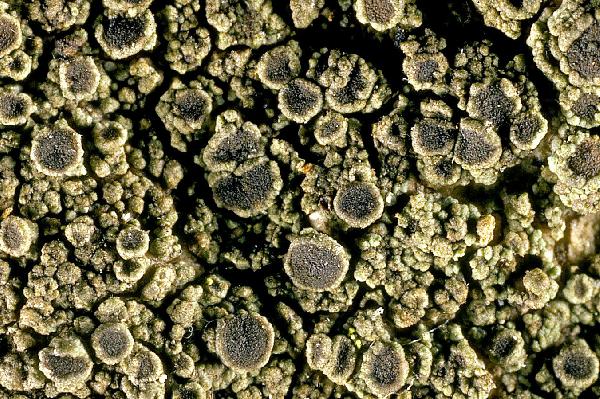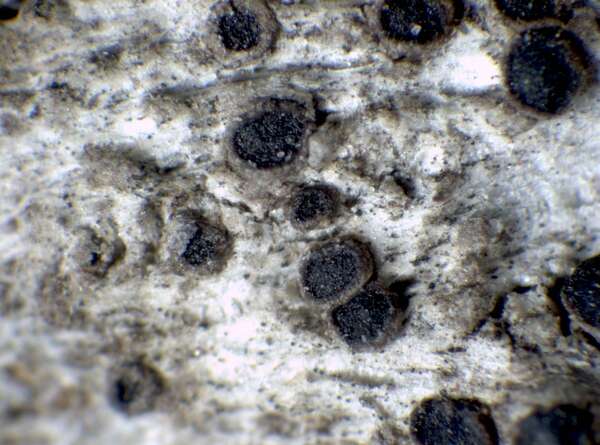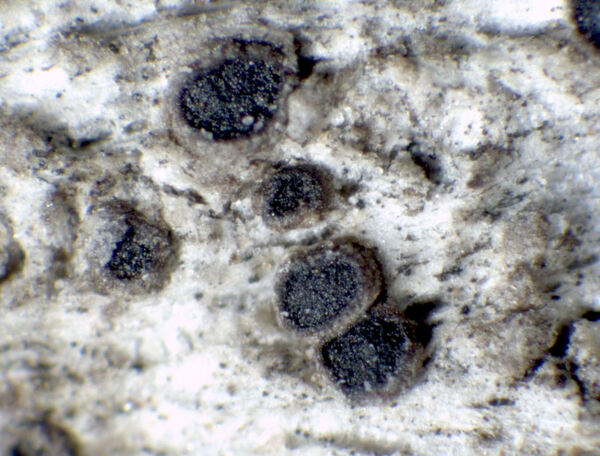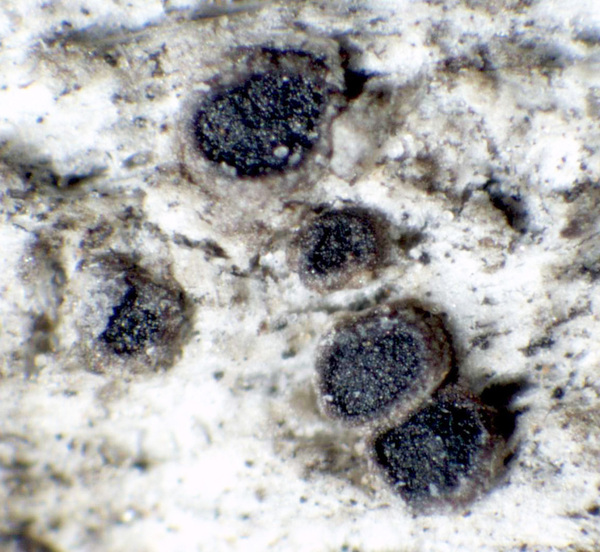Rinodina archaea (Ach.) Arnold
Flora, 64: 195, 1881. Basionym: Parmelia sophodes var. archaea Ach. - Meth. Lich: 156, 1803.
Synonyms: Diploicia trevisanii (Hepp) A. Massal. non auct.; Lecanora archaea (Ach.) Harm.; Lecanora sophodes var. laevigata Ach.; Rinodina archaea f. aggregata H. Magn.; Rinodina archaea f. paupera H. Magn.; Rinodina exigua var. lecideoides (Nyl.) Arnold; Rinodina laevigata (Ach.) Malme; Rinodina lecideoides (Nyl.) Mig.; Rinodina lecideoides var. cinerea H. Magn.; Rinodina subobscura H. Magn.; Rinodina trevisanii (Hepp) Körb. non auct.
Distribution: N - Ven, TAA (Mayrhofer & Sheard 2007, Nascimbene & al. 2007b, 2022), Lomb (Mayrhofer & Sheard 2007), Piem, Emil (Nimis & al. 1996, Fariselli & al. 2020). C - Tosc (Mayrhofer & Sheard 2007), Sar (Giralt & Mayrhofer 1995, Zedda & Sipman 2001, Mayrhofer & Sheard 2007). S - Cal (Giralt & Mayrhofer 1995, Puntillo 1996).
Description: Thallus crustose, episubstratic, rather thick, whitish to pale grey, dull, without a distinct prothallus, rimose or areolate, the areoles 0.15-0.4 mm wide, flat to minutely verrucose. Apothecia lecanorine, subimmersed to broadly attached, abundant, often contiguous and angular by mutual compression, 0.3-0.7(-0.9) mm across, with a dark reddish brown to brown-black, flat to rarely convex disc, an up to 0.1 mm thick, entire, persistent thalline margin and often a thin parathecial ring. Thalline exciple corticate, 40-80 µm wide laterally, (30-)40-100 µm wide at base, the cortex paraplectenchymatous, 5-10 µm wide, I- or I+ blue; proper exciple 5-20 µm wide, weakly pigmented, expanding to 10-40 µm in upper part; epithecium red-brown, K-; hymenium colourless, 50-60(-100) µm high, not inspersed with oil droplets; paraphyses 1.5-2.5 µm thick at mid-level, often conglutinate, the apical cells up to 3.5-5(-7) µm wide, lightly pigmented; hypothecium colourless, (30-)40-80 µm high. Asci 8-spored, cylindrical-clavate, the K/I+ blue tholus penetrated by a faintly amyloid apical cushion with parallel or diverging flanks, the wall K/I-, surrounded by a K/I+ blue outer layer, Lecanora-type. Ascospores 1-septate, pigmented, ellipsoid, (15.5-)19-20(-23.5) x (7.5-)9-10(-11) µm, Physconia-type, the wall minutely warted, the torus always well-developed, with an ontogeny of type A (apical wall thickening after septum formation). Photobiont chlorococcoid. Spot tests: cortex and medulla K-, C-, KC-, P-, UV-. Chemistry: zeorin and an unidentified substance (traces).Note: a mainly temperate lichen, typically lignicolous but also rarely occurring on bark, on basal parts of broad-leaved trees, more rarely of conifers, in open woodlands; exceptionally also found on siliceous rocks; optimum in the montane belt. The species, also in the recent past, was often confused with R. trevisanii (see Mayrhofer & Sheard 2007, Sheard 2010).
Growth form: Crustose
Substrata: rocks, bark, and lignum
Photobiont: green algae other than Trentepohlia
Reproductive strategy: mainly sexual
Commonnes-rarity: (info)
Alpine belt: absent
Subalpine belt: extremely rare
Oromediterranean belt: absent
Montane belt: rare
Submediterranean belt: very rare
Padanian area: absent
Humid submediterranean belt: very rare
Humid mediterranean belt: absent
Dry mediterranean belt: absent

Predictive model
Herbarium samples
Growth form: Crustose
Substrata: rocks, bark, and lignum
Photobiont: green algae other than Trentepohlia
Reproductive strategy: mainly sexual
Commonnes-rarity: (info)
Alpine belt: absent
Subalpine belt: extremely rare
Oromediterranean belt: absent
Montane belt: rare
Submediterranean belt: very rare
Padanian area: absent
Humid submediterranean belt: very rare
Humid mediterranean belt: absent
Dry mediterranean belt: absent

Predictive model
| Herbarium samples |
 INDEX FUNGORUM
INDEX FUNGORUM
 GBIF
GBIF
 DOLICHENS
DOLICHENS









